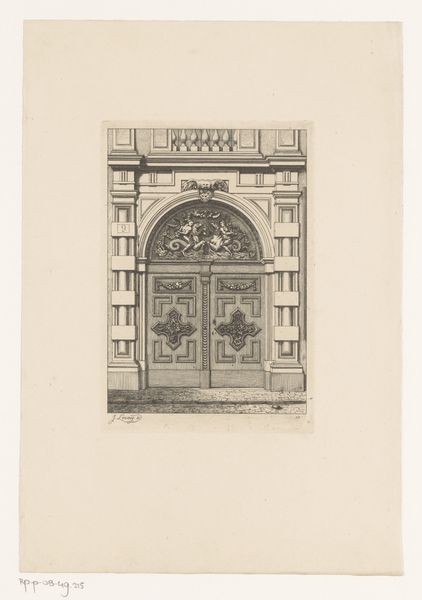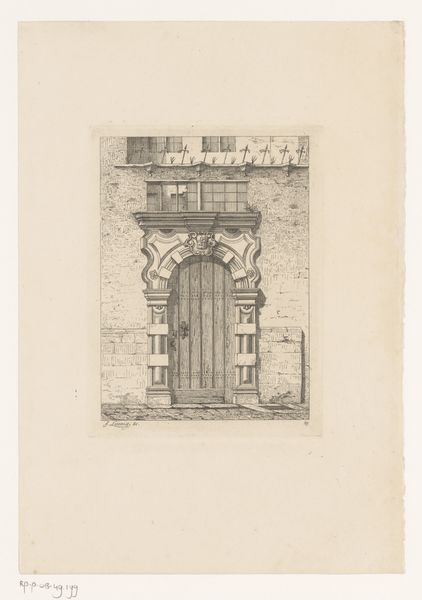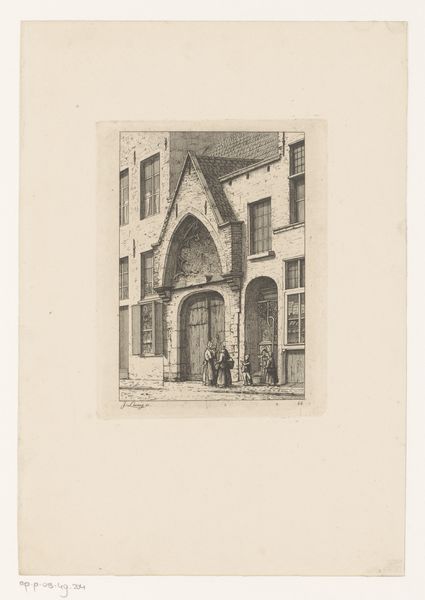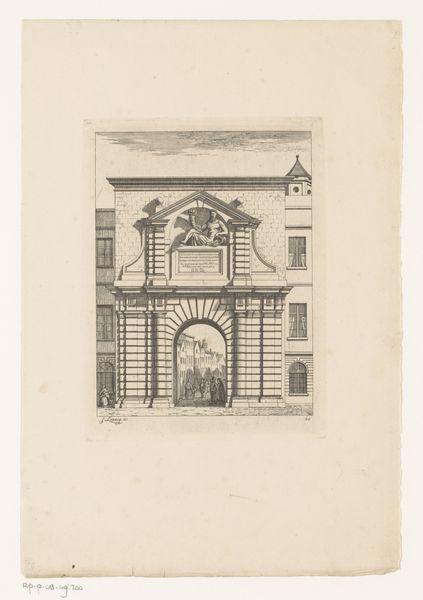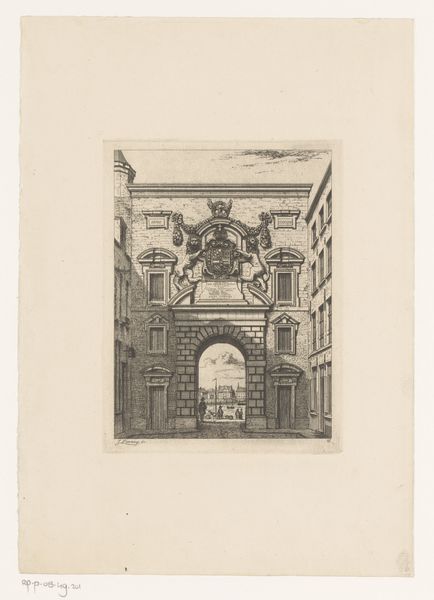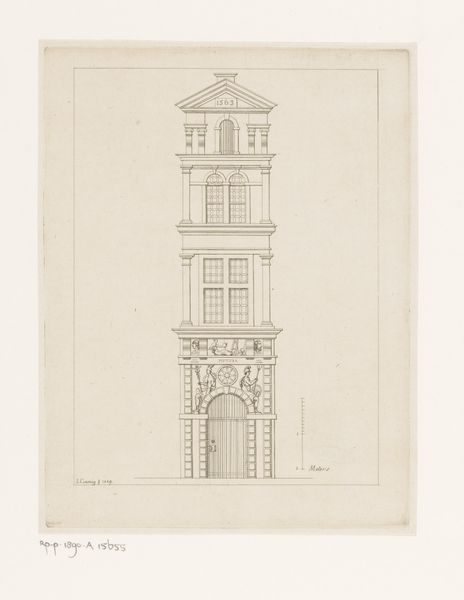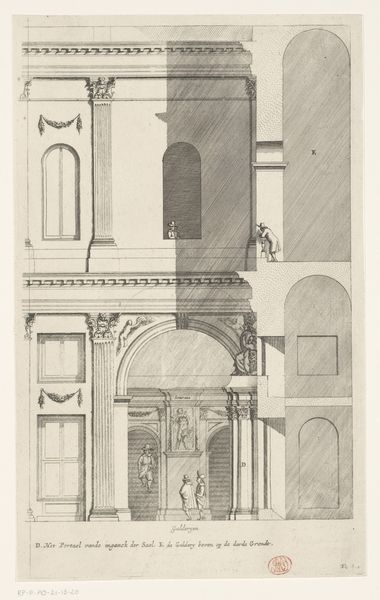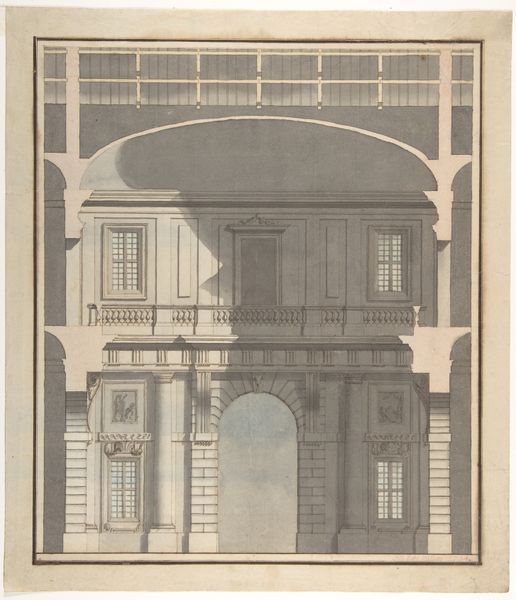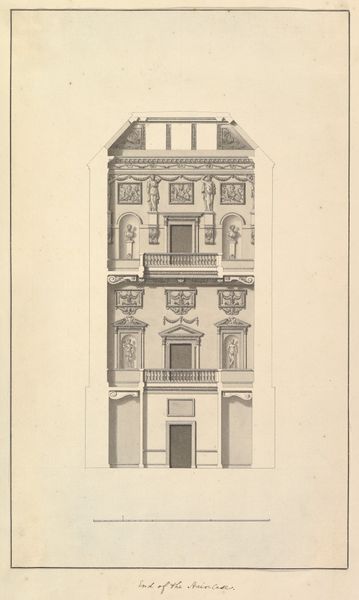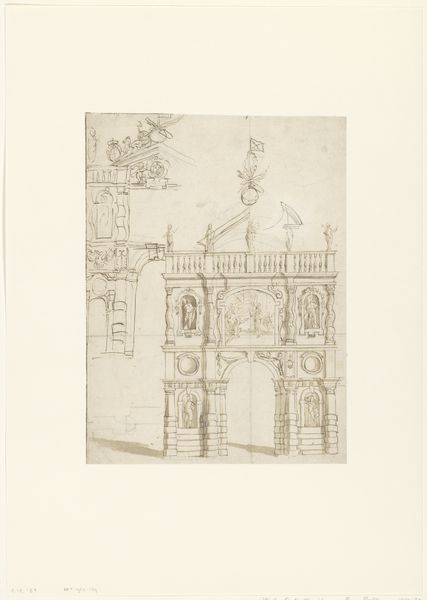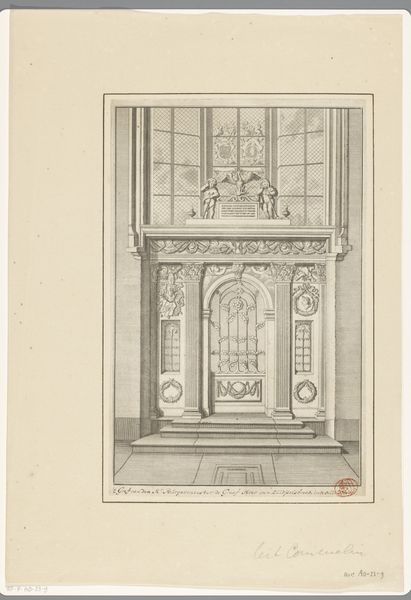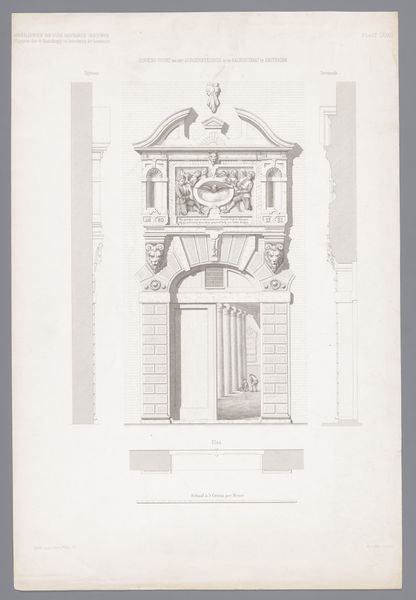
print, etching
#
16_19th-century
# print
#
etching
#
cityscape
#
realism
#
building
Dimensions: height 187 mm, width 122 mm
Copyright: Rijks Museum: Open Domain
Curator: Ah, here we have Jean Théodore Joseph Linnig’s etching from 1868, “Door of a House in Kaasstraat in Antwerp.” Editor: The density of line work gives the entire image a somewhat somber tone, almost oppressive despite the daylight. The textures of the stone and the wood of the door are well defined. Curator: Indeed. What I find striking about Linnig's focus here is the labor inherent in creating such an ornate doorway. You see the details – the ironwork, the carvings – all speak to the artisans involved and the economic resources such craftsmanship would demand in 19th century Antwerp. The etching process itself mimics the painstaking nature of traditional construction. Editor: But look at the relationship between these various materials. The etching medium itself, creating delicate lines to represent weighty stone, has interesting structural implications, does it not? There's a play with expectations given the architectural shapes themselves are quite traditional. I also note how the upper windows almost mirror the door shape but are much simpler. Curator: Precisely. It reflects the socio-economic stratification inherent in urban life. The wealthy merchant displays status through their home while those in less prominent houses were forced to make due with less or even make all the features of a house themselves. But in contrast this also raises a question of class and labor – the material here obscures the hands that likely toiled at such a massive build for upper class persons. Editor: Interesting. The light and shadow further complicate the facade, particularly in the interplay of solid and void. A doorway beckons entry but the building looks almost abandoned in presentation. There appears a tension between welcome and exclusion; almost suggesting in this simple door we consider wider ideas such as those that govern thresholds, accessibility, and transitions in society. Curator: Yes, by focusing on something so everyday, the door, and presenting it with such exacting detail, Linnig compels us to look beyond its mere function. It's about consumption as well as the lives intertwined to present a single domestic space. Editor: The architecture, rendered through this etching, gains a unique presence by this attention, does it not? Curator: Absolutely, Linnig makes us reconsider the built environment itself. Editor: An eye-opening encounter.
Comments
No comments
Be the first to comment and join the conversation on the ultimate creative platform.
